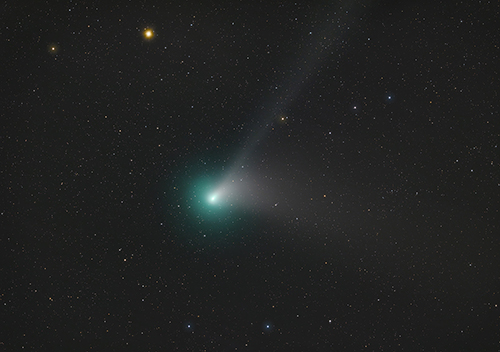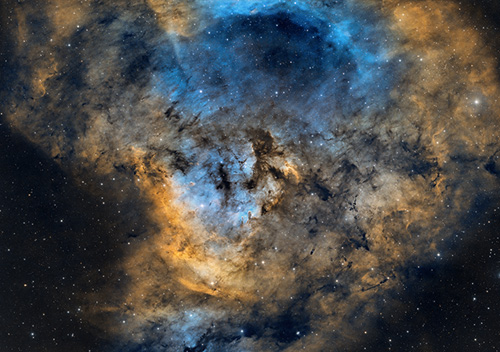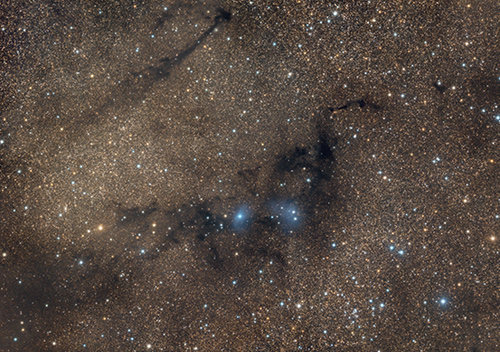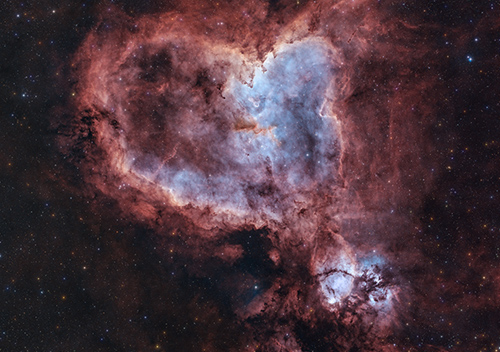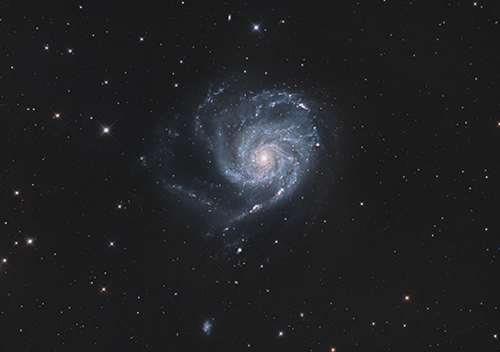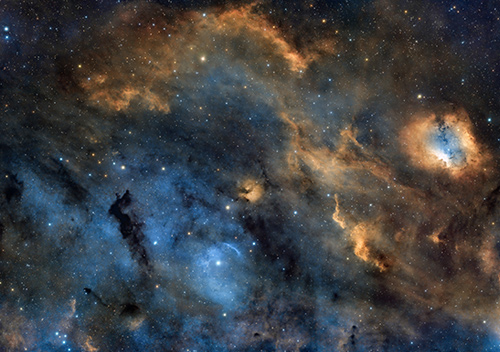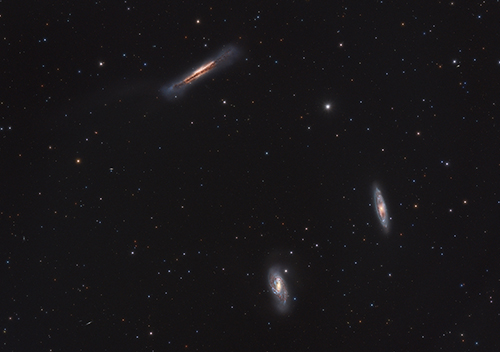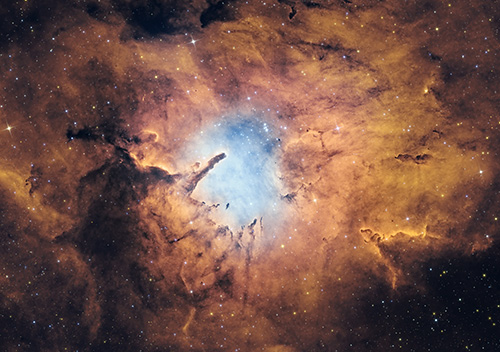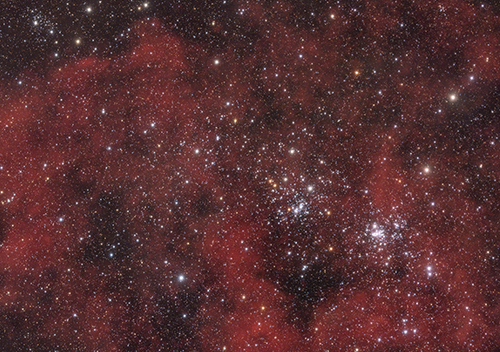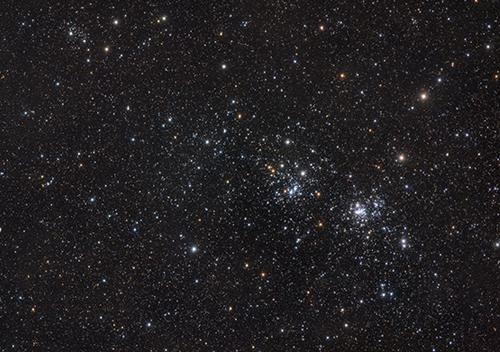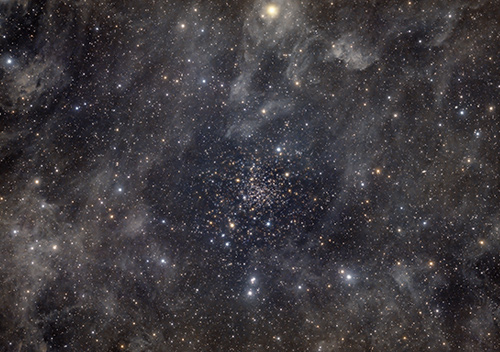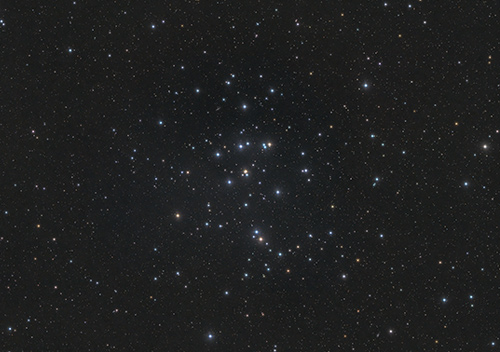
The Clamshell Nebula
Sh2-119
Sh2-119, commonly known as the Clamshell Nebula, is a stunning emission nebula located in the constellation Cygnus, approximately 10,000 light-years away from Earth. It is named after its unique resemblance to a clamshell or a celestial pair of wings, which makes it visually captivating.
The Clamshell Nebula is part of a larger complex of interstellar gas and dust called the Cygnus Loop or the Veil Nebula. It is formed by the expanding remnants of a supernova explosion that occurred thousands of years ago. The shockwave from the explosion interacts with the surrounding interstellar medium, causing the gas to ionize and emit radiation.
The nebula's distinctive shape is a result of the interaction between the expanding shockwave and a dense region of interstellar material. This interaction compresses and sweeps the gas and dust, creating the appearance of two symmetrical arcs resembling a clamshell or wings. These arcs are predominantly composed of ionized hydrogen gas, which gives the nebula its characteristic reddish hue.
Observations of the Clamshell Nebula reveal the presence of other elements and molecules, such as sulfur, oxygen, and carbon. These elements contribute to the overall composition of the nebula and provide valuable information about the chemical processes taking place within it.
The Clamshell Nebula is an active star-forming region, with ongoing processes of stellar birth and evolution. Embedded within the nebula are young, massive stars that are illuminating and shaping the surrounding gas and dust. These stars emit intense ultraviolet radiation that ionizes the hydrogen atoms, causing them to emit light and contribute to the nebula's glow.
In order to bring out as many details as possible, I decided to use the false color technique, that got famous by the pictures of the Hubble Space Telescopes. The "real" colors are assigned to other colors: sulfur (Sii) = red, hydrogen (h) = green, oxygen (o) = blue. This results in an increase in contrast, and more details become visible.
The Clamshell Nebula is part of a larger complex of interstellar gas and dust called the Cygnus Loop or the Veil Nebula. It is formed by the expanding remnants of a supernova explosion that occurred thousands of years ago. The shockwave from the explosion interacts with the surrounding interstellar medium, causing the gas to ionize and emit radiation.
The nebula's distinctive shape is a result of the interaction between the expanding shockwave and a dense region of interstellar material. This interaction compresses and sweeps the gas and dust, creating the appearance of two symmetrical arcs resembling a clamshell or wings. These arcs are predominantly composed of ionized hydrogen gas, which gives the nebula its characteristic reddish hue.
Observations of the Clamshell Nebula reveal the presence of other elements and molecules, such as sulfur, oxygen, and carbon. These elements contribute to the overall composition of the nebula and provide valuable information about the chemical processes taking place within it.
The Clamshell Nebula is an active star-forming region, with ongoing processes of stellar birth and evolution. Embedded within the nebula are young, massive stars that are illuminating and shaping the surrounding gas and dust. These stars emit intense ultraviolet radiation that ionizes the hydrogen atoms, causing them to emit light and contribute to the nebula's glow.
In order to bring out as many details as possible, I decided to use the false color technique, that got famous by the pictures of the Hubble Space Telescopes. The "real" colors are assigned to other colors: sulfur (Sii) = red, hydrogen (h) = green, oxygen (o) = blue. This results in an increase in contrast, and more details become visible.
Nominated for  Top Pick on Astrobin
Top Pick on Astrobin
 Top Pick on Astrobin
Top Pick on AstrobinImage Details
| Date |
August 2 & September 20, 2022 |
| LOCATion |
Hannover (Germany) |
| Sky Quality |
Bortle 5 |
| Telescope |
Celestron RASA 8 (203/400 f/2) |
| Mount |
Skywatcher EQ6-R Pro |
| Main Cameras |
ZWO ASI 2600 MC Pro Gain 100, Offset 18, -10° ZWO ASI 1600MM Pro Gain 75, Offset 15, -5° |
| Focuser |
Celestron Motorfocus |
| Filter |
IDAS NBZ Baader S-II 6.5nm |
| Exposure |
RGB (Stars): 60 × 5″ (5′) Ha & OIII: 90 × 120″ (3h) SII: 120 × 120″( 4h) Total: 7h 5′ |
| Guiding |
ZWO ASI 120MM, PHD2 |
| Calibration |
Flats, Darks, Darkflats |
| Software |
N.I.N.A., EQMod |
| Other |
Artesky Filter Holder |
| Processing | Astropixelprocessor, Photoshop, Pixinsight |

Gallery




